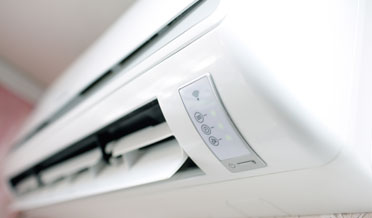Ductless Mini-split Air Conditioners FAQs
I have questions about ductless mini-split air conditioners!
Can you tell me more about ductless mini-split AC systems?
Air conditioning technologies for home use began in many places at once in about 1959. As the technology reached Japan, bulky, noisy air conditioning did not make sense for a large number of small homes with thin walls packed into tight spaces. Engineers successfully engineered AC units for small spaces that made little noise, and the technology took off in Asia and Europe.
Mini-split systems did not find a market in the US until about 1995. Today, ductless systems account for approximately 10% of the HVAC market in many states. They are very efficient, cost-effective, and are a low-impact AC solution for applications such as single room additions, attics, or basement renovations.
Is Ductless Mini-splits really as quiet as advertised?
Central AC systems are known for having noisy outdoor condenser units, powerful blower motors that circulate air through the entire house, and banging or popping noise after a circulation cycle. Window AC units are also very noisy, combining the condenser and the blower motor together in the same room being serviced.
In contrast, the mini-split system operates a variable speed blower on the indoor unit which is almost silent. The outdoor unit runs whisper-soft, with an average of 32 decibels, between the sound of rustling leaves and a quiet library. Mini-splits are very quiet!
Is Ductless Mini-splits hard to maintain?
For the longevity of your system, you will need to maintain your ductless system for peak performance. But since the system is smaller and there are no ducts in a ductless system, there is less to do than with a central air conditioning system. Just follow these simple steps:
- Keep it clean. Dust the inside unit with a damp rag as you would any other appliance. Make sure vents are free from blockages.
- Spray the outside condenser unit with a hose twice annually to keep it free from dirt build-up. Make sure the unit is powered down as you spray.
- Give the unit space. It needs plenty of room to operate, so make sure the indoor unit has at least four feet of surrounding space in each direction.
- Replace the filter as per the manufacturer’s instruction. Since the unit is small, clogged filters will quickly restrict airflow.
- Call a pro as needed for routine maintenance (just as you would for a central air conditioning unit). A technician will check refrigerant levels, electrical components, and system efficiency.
What is the “life expectancy” of a Ductless Mini-split system?
The key to any system is maintenance, but a mini-split ductless system average service life exceeds the service life of alternative solutions. The typical window AC unit lasts about 10 years, while a central HVAC system has a life span of 15 to 20 years. Expect your ductless system, with fewer components, to last more than 20 years.
I feel the Ductless Mini-split units are boxy and unattractive?
No, you are thinking of a window AC unit! The indoor components of a ductless system are sleek, low profile, inconspicuous units, usually attached high on a wall so as not to take up space. Often you have a choice of stylish housings to fit with most existing decors.
Want more information about Ductless AC Systems?
For more information about R.M. Mullinix or Ductless AC Systems Solutions for Homeowners, schedule an appointment, or visit our HVAC installation information page.

